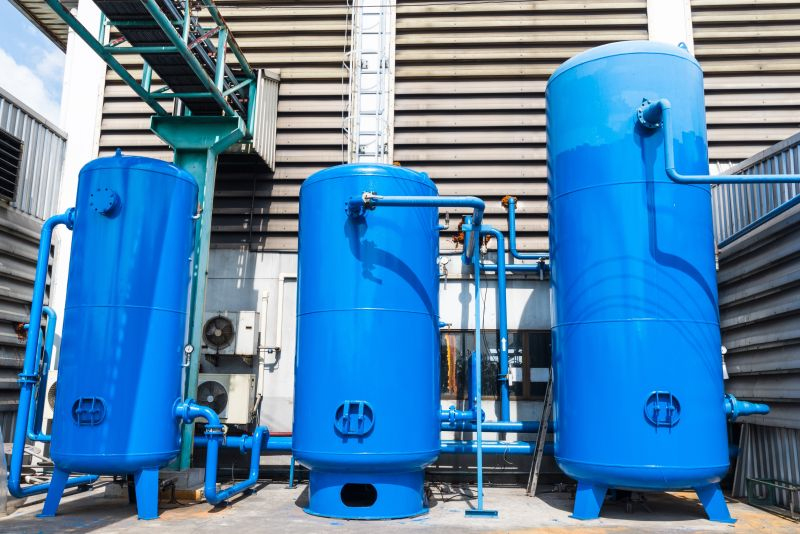The air tank is strictly prohibited from overpressure and overtemperature, and the staff should ensure that the gas storage tank is in normal working condition.
It is strictly forbidden to use open flames around the gas storage tank or on the container, and it is forbidden to use open flames to view the inside of the container. When the gas storage tank is under pressure, no maintenance, hammering or other impact on the tank is allowed.
Oil-lubricated compressors must be degreased and water-removed.

The oil content, water vapor content, and solid particle size and concentration level of the compressed air are in line with the appendix of GB/T3277-91 "General Compressed Air Quality Grades" Only after the provisions of A can enter the gas storage tank.
In view of the contact between the oil and the air in the air compressor, once the temperature is too high, it is easy to cause carbon deposits to spontaneously ignite and the oil explosion fire mechanism, the compressed air entering the air storage tank is strictly prohibited to exceed the design temperature of the tank. In order to avoid excessive discharge temperature, the air compressor must regularly check the over-temperature shutdown device, regularly check the heat transfer surfaces (filters, separators, coolers) and clean them.
For oil compressors, all pipelines, containers and accessories between the exhaust port and the compressed air temperature of 80 degrees should be checked regularly to effectively remove carbon deposits.
The use and maintenance of air storage tanks and air compressors must strictly follow the "Safety Rules and Operating Procedures for Fixed Air Compressors", "Safety Requirements for Volumetric Air Compressors" and "Safety Requirements for Process Compressors".
If the user of the gas storage tank does not implement the above-mentioned requirements and warnings, it may cause serious consequences such as failure of the gas storage tank and explosion.
Post time: Sep-07-2023









